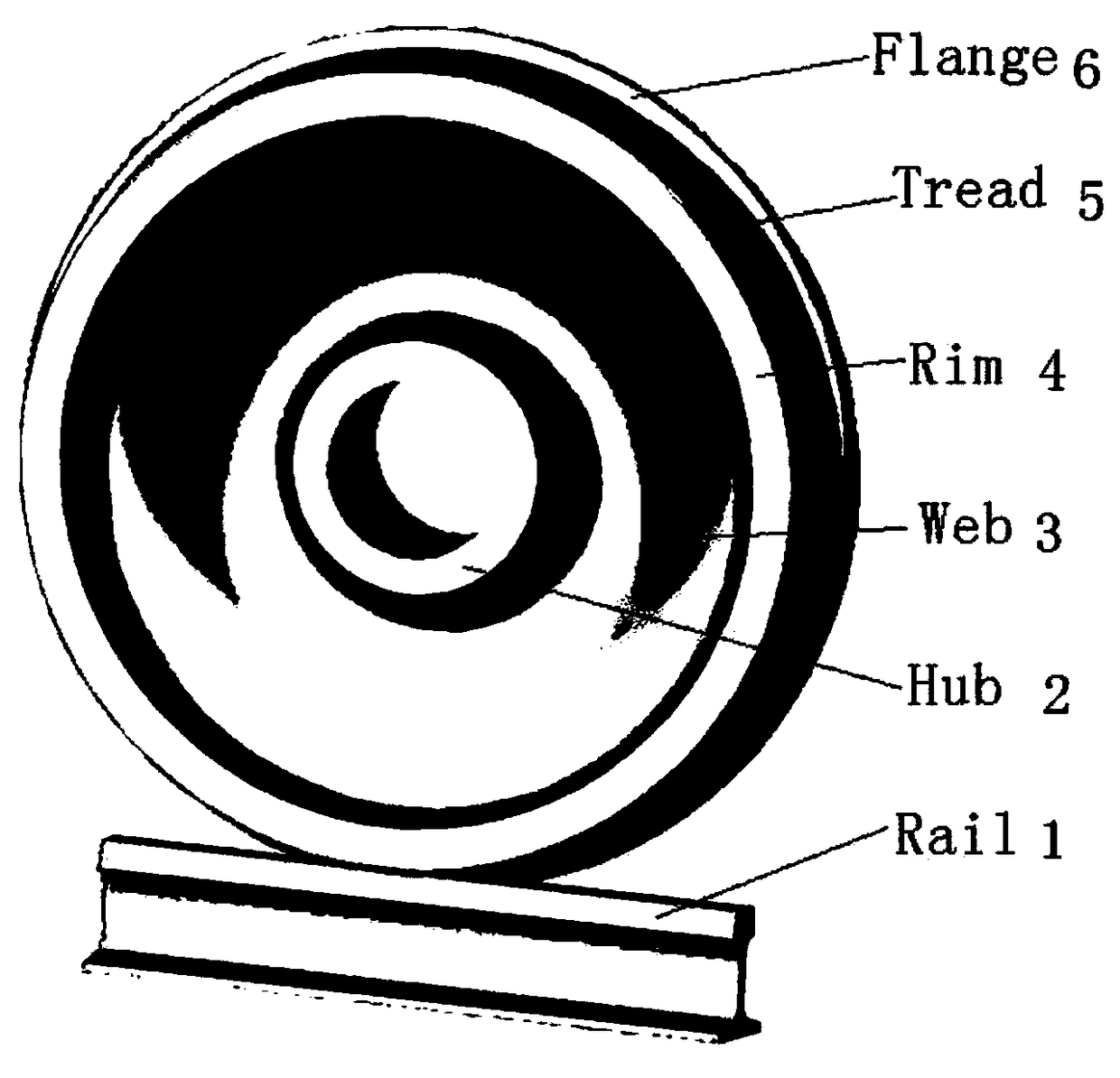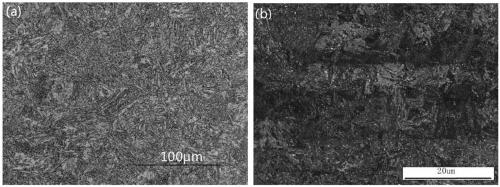Bainitic steel wheel for rail traffic with capability of resisting against damp, hot and corrosive environments and manufacturing method thereof
A technology for corrosive environments and rail transportation, applied in the field of rail transportation, can solve problems such as corrosion of micro-batteries, poor hardenability, plastic deformation of wheels, etc., and achieve the effects of improving operating efficiency, reducing friction coefficient, and prolonging service life
- Summary
- Abstract
- Description
- Claims
- Application Information
AI Technical Summary
Problems solved by technology
Method used
Image
Examples
Embodiment 1
[0072] A bainitic steel wheel resistant to damp heat and corrosive environment, containing the chemical composition as described in Example 1 in Table 2.
[0073] The manufacturing method is as follows: the molten steel whose chemical composition is as shown in Example 1 in Table 2 is subjected to a steelmaking process, a refining process, a vacuum degassing process, a round billet continuous casting process, an ingot cutting process, a forging rolling process, a heat treatment process, processing, and finished product detection. process is formed. The heat treatment process is as follows: heating to 942°C for 4.3 hours, the rim tread is cooled to 200-350°C by program-controlled water spray, and air-cooled to room temperature, during which self-tempering is carried out by using the residual heat of the rim, web and hub; then Then heat to 250-350℃ for 4 hours at medium and low temperature, and then air-cool to room temperature after tempering.
[0074] like figure 2 As shown...
Embodiment 2
[0076] A bainitic steel wheel resistant to damp heat and corrosive environment, containing the chemical composition as described in Example 1 in Table 2.
[0077] The manufacturing method is as follows: the molten steel whose chemical composition is as shown in Table 2 Example 2 is subjected to a steelmaking process, a refining process, a vacuum degassing process, a round billet continuous casting process, an ingot cutting process, a forging rolling process, a heat treatment process, processing, and finished product detection. process is formed. The heat treatment process is as follows: heating to 936°C for 3.8 hours, the rim tread is cooled to 200-360°C by program-controlled water spray, air-cooled to room temperature, during which self-tempering is carried out by using the residual heat of the rim, web and hub; then Then heat to 250-350°C for medium and low temperature tempering for 3.5 hours, and then air-cool to room temperature after tempering.
[0078] like image 3 As...
Embodiment 3
[0081] A bainitic steel wheel resistant to damp heat and corrosive environment, containing the chemical composition as described in Example 1 in Table 2.
[0082] The manufacturing method is as follows: the molten steel whose chemical composition is as shown in Table 2 Example 3 is subjected to a steelmaking process, a refining process, a vacuum degassing process, a round billet continuous casting process, an ingot cutting process, a forging rolling process, a heat treatment process, processing, and finished product detection. process is formed. The heat treatment process is as follows: heating to 943°C for 4.2 hours, the rim tread is cooled to 200-380°C by program-controlled water spray, air-cooled to room temperature, during which self-tempering is carried out by using the residual heat of the rim, web and hub; then Then heat to 300-400℃ for 4.2 hours at medium and low temperature, and then air-cool to room temperature after tempering.
[0083] like Figure 5 , 6 As shown...
PUM
| Property | Measurement | Unit |
|---|---|---|
| diameter | aaaaa | aaaaa |
| diameter | aaaaa | aaaaa |
| diameter | aaaaa | aaaaa |
Abstract
Description
Claims
Application Information
 Login to View More
Login to View More - R&D
- Intellectual Property
- Life Sciences
- Materials
- Tech Scout
- Unparalleled Data Quality
- Higher Quality Content
- 60% Fewer Hallucinations
Browse by: Latest US Patents, China's latest patents, Technical Efficacy Thesaurus, Application Domain, Technology Topic, Popular Technical Reports.
© 2025 PatSnap. All rights reserved.Legal|Privacy policy|Modern Slavery Act Transparency Statement|Sitemap|About US| Contact US: help@patsnap.com



